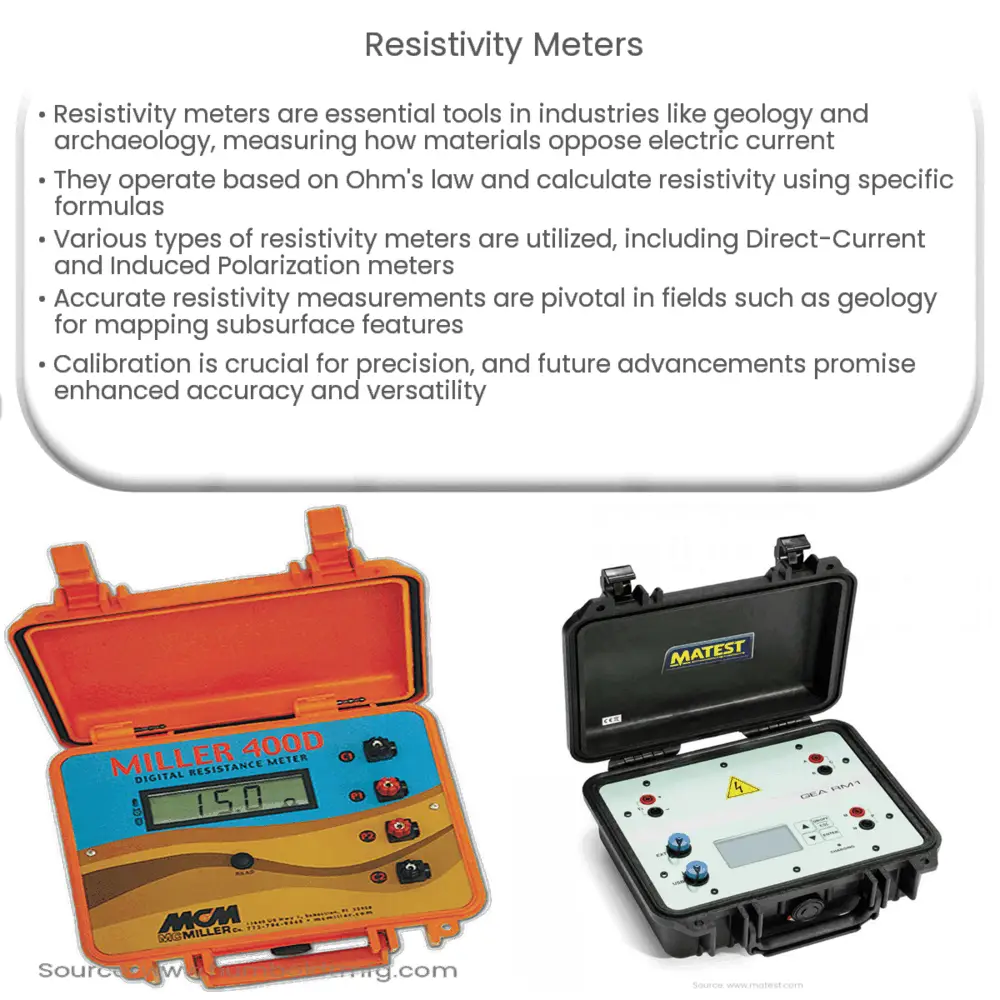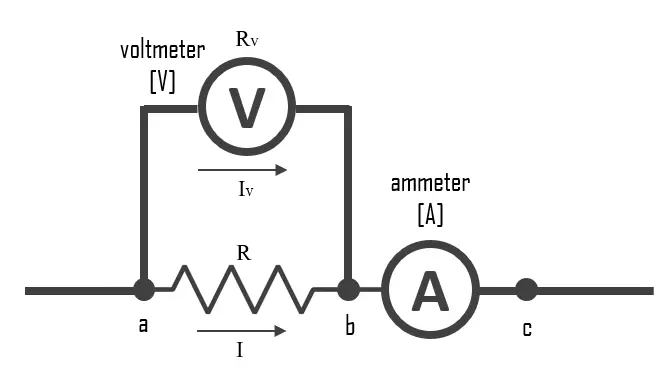Explore the fundamentals of resistivity meters, their types, applications, calibration, limitations, and future prospects.

Understanding Resistivity Meters
Resistivity meters are crucial tools in many industries, such as geology, environmental science, archaeology, and civil engineering. They provide an effective means to measure the resistivity of a substance – a fundamental property that indicates how strongly a material opposes the flow of electric current.
How Resistivity Meters Work
Resistivity meters function based on Ohm’s law, which states that the electric current passing through a conductor between two points is directly proportional to the voltage across the two points. This relationship is expressed as I = V/R, where I is the current, V is the voltage, and R is the resistance.
To determine resistivity, the meter applies a known voltage and measures the resulting current. The resistivity (ρ) can then be calculated using the formula ρ = RA/l, where R is the resistance, A is the cross-sectional area, and l is the length of the material.
Types of Resistivity Meters
- Direct-Current Resistivity Meters: These devices apply direct current to the material and measure the resulting voltage. They’re commonly used in geological surveys and environmental studies.
- Induced Polarization Resistivity Meters: This type of meter introduces an electric current into the ground and measures the resulting potential difference. It is particularly useful in mineral exploration and environmental investigations.
- Four-Point Resistivity Meters: These instruments use four electrodes – two to inject current and two to measure potential difference. This configuration reduces errors caused by contact resistance between the electrodes and the material.
Applications of Resistivity Meters
The ability to accurately measure resistivity makes these meters invaluable in many fields. For instance, in geology, they help map subsurface features by identifying changes in ground resistivity. In environmental science, resistivity meters can detect areas of pollution by spotting variations in soil or water resistivity. Archaeologists use these devices to locate buried structures or artifacts without disturbing the ground.
Overall, resistivity meters play a significant role in many areas of study and industry, offering a non-invasive and cost-effective way to analyze material properties.
The Importance of Calibration
For resistivity meters to deliver accurate measurements, they must be properly calibrated. Calibration ensures the meter’s readings match the values of known standards. This process varies depending on the type of meter and its specific application but generally involves adjusting the meter to read correctly under known conditions. Regular calibration is essential to maintain the reliability and accuracy of resistivity measurements.
Limitations and Considerations
While resistivity meters are incredibly useful, it’s important to note that they have some limitations. For instance, they can be influenced by temperature changes, which can alter a material’s resistivity. Moreover, the complex geometry of the object or area being measured may affect the results. Therefore, it’s crucial to interpret the results of resistivity measurements in the context of these potential influences.
The Future of Resistivity Meters
With advancements in technology, the capabilities of resistivity meters continue to evolve. Future developments may see more portable and user-friendly designs, increased accuracy, and integration with other technologies like GPS or remote sensing. The potential for these improvements highlights the exciting future for resistivity meters in various fields.
Conclusion
In conclusion, resistivity meters are instrumental in numerous industries, providing vital insights into the resistive properties of materials. Despite some limitations, their ability to non-invasively analyze and map material properties makes them an invaluable tool. As technology advances, these devices will likely become even more versatile and precise, opening new possibilities for scientific exploration and industrial application. The future of resistivity meters promises exciting innovations and continued contributions to our understanding of the world.



